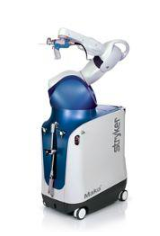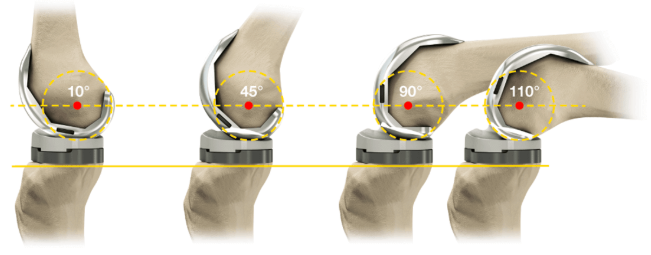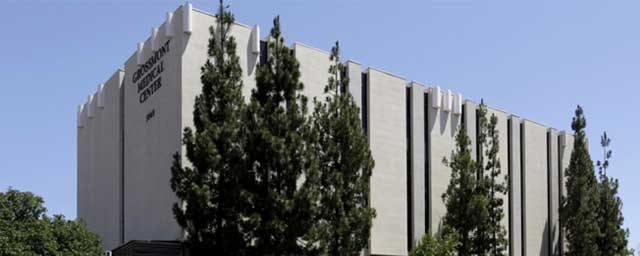 Mako Total Knee replacement
Mako Total Knee replacement
Over the years, knee replacement techniques and instrumentation have undergone countless improvements. Mako Robotic-Arm Assisted Technology with Triathlon Total Knee implants is an example of how technology is transforming the way joint replacement surgeries are being performed.
When you hear ‘robotic-arm assisted technology,’ it’s important to understand that the Mako Robotic-Arm doesn’t actually perform the surgery. Surgery is performed by an Dr. Allsing, who uses the Mako System software to pre-plan your surgery. Dr. Allsing will guide the Mako robotic-arm to remove diseased bone and cartilage. Then Dr. Allsing will insert a Triathlon Total Knee implant.
Mako Technology was designed to help surgeons provide patients with a personalized surgical experience based on their specific diagnosis and anatomy.
Triathlon Total Knee implant
With over a decade of clinical history, Triathlon single-radius knees are different than traditional knee replacements because they are designed to work with the body to promote natural-like circular motion. This is due to the single radius design of the knee implant. Single radius means that as your knee flexes, the radius is the same, similar to a circle, potentially requiring less effort from your quadriceps muscle.

Before surgery
It all begins with a CT scan of your knee joint that is used to generate a 3D virtual model of your unique anatomy. This virtual model is loaded into the Mako System software and is used by Dr. Allsing to create your personalized pre-operative plan.
In the Operating Room
In the operating room, Dr. Allsing will use the Mako System to assist in performing your surgery based on your personalized pre-operative plan. When he prepares the bone for the implant, Dr. Allsing positions the robotic-arm within the pre-defined area and the Mako System helps him stay within the planned boundaries that were defined when the personalized pre-operative plan was created. The Mako System also allows him to make adjustments to your plan during surgery as needed
After Surgery
After surgery, Dr. Allsing, nurses and physical therapists will set goals with you to get you back on the move. They will closely monitor your condition and progress. We will review a post-operative x-ray of your new knee with you.
Frequently asked questions
Q: Is Mako covered by health insurance providers?
A: We understand that making sure your total knee replacement is covered by health insurance is important to you. Check with your health insurance provider to verify your specific coverage.
Q: How long has the Mako procedure been available?
A: The first Mako procedure was a partial knee replacement performed in June of 2006. Since that time, over 83,000 Mako hip and knee replacement procedures have been performed around the world.10
Q: Does the Mako robotic-arm actually perform surgery?
A: No, the robotic-arm doesn’t perform surgery, nor can it make decisions on its own or move without the surgeon guiding it.
Q: How long do knee implants last?
A: Individual results vary and not all patients will have the same postoperative recovery and activity level. The lifetime of a knee replacement is not infinite and varies with each individual.



